MP Board Solutions for Class 9 Economics Chapter 3 – Poverty as a Challenge
MP Board Solutions for Class 9 Economics Chapter 3 – Poverty as a Challenge are essential for understanding the causes, indicators, and impact of poverty in India, in line with the MPBSE curriculum. These well-structured answers help students grasp topics like poverty line, social exclusion, and anti-poverty programs initiated by the government. Designed according to the latest syllabus, these solutions strengthen conceptual clarity and improve exam preparation. Ideal for revision and practice, they develop socio-economic awareness, making them a valuable study tool for scoring well in Class 9 Social Science exams.
MP Board Solutions For Class 9 Economics – Poverty as a Challenge – Exercise Images
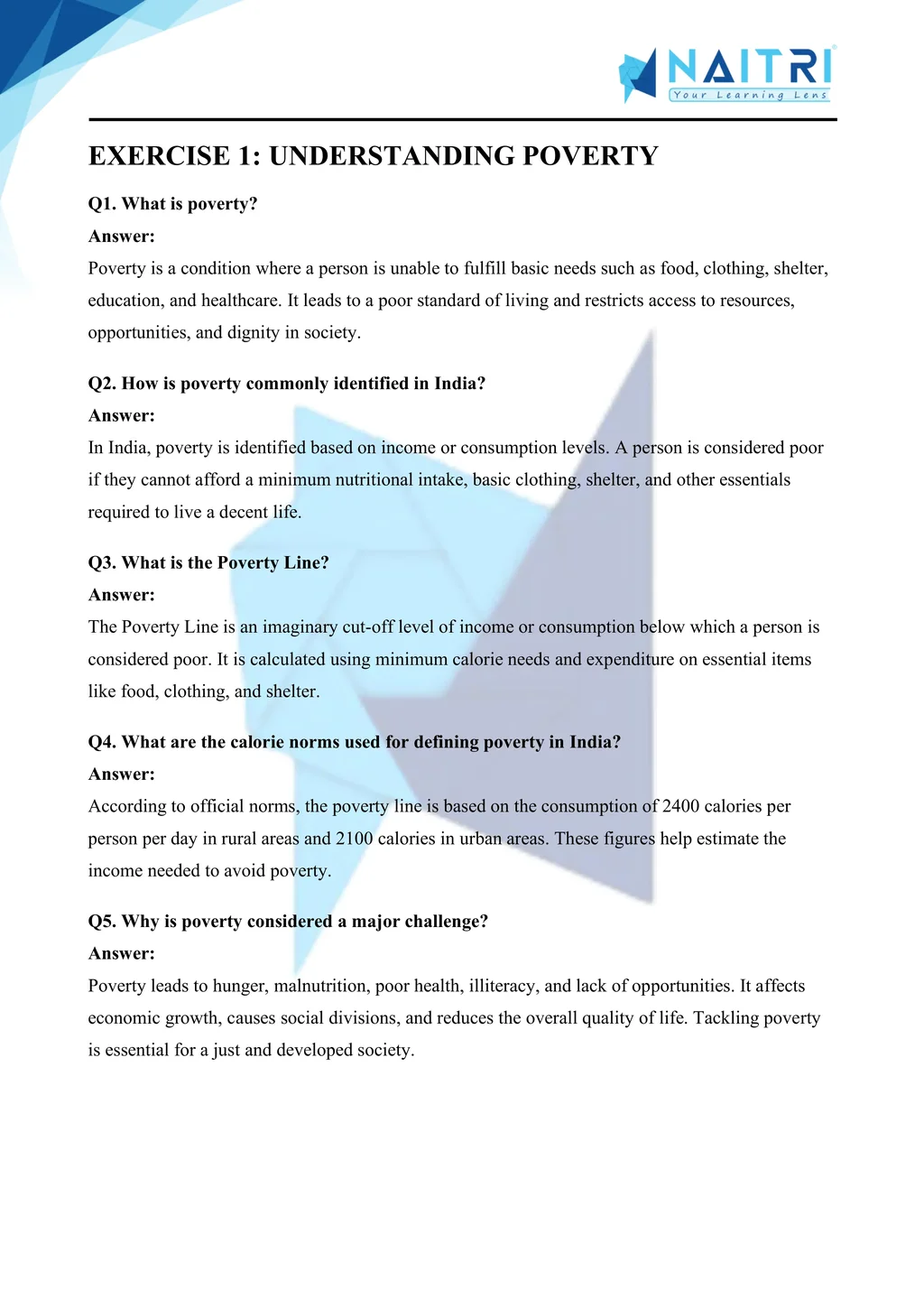
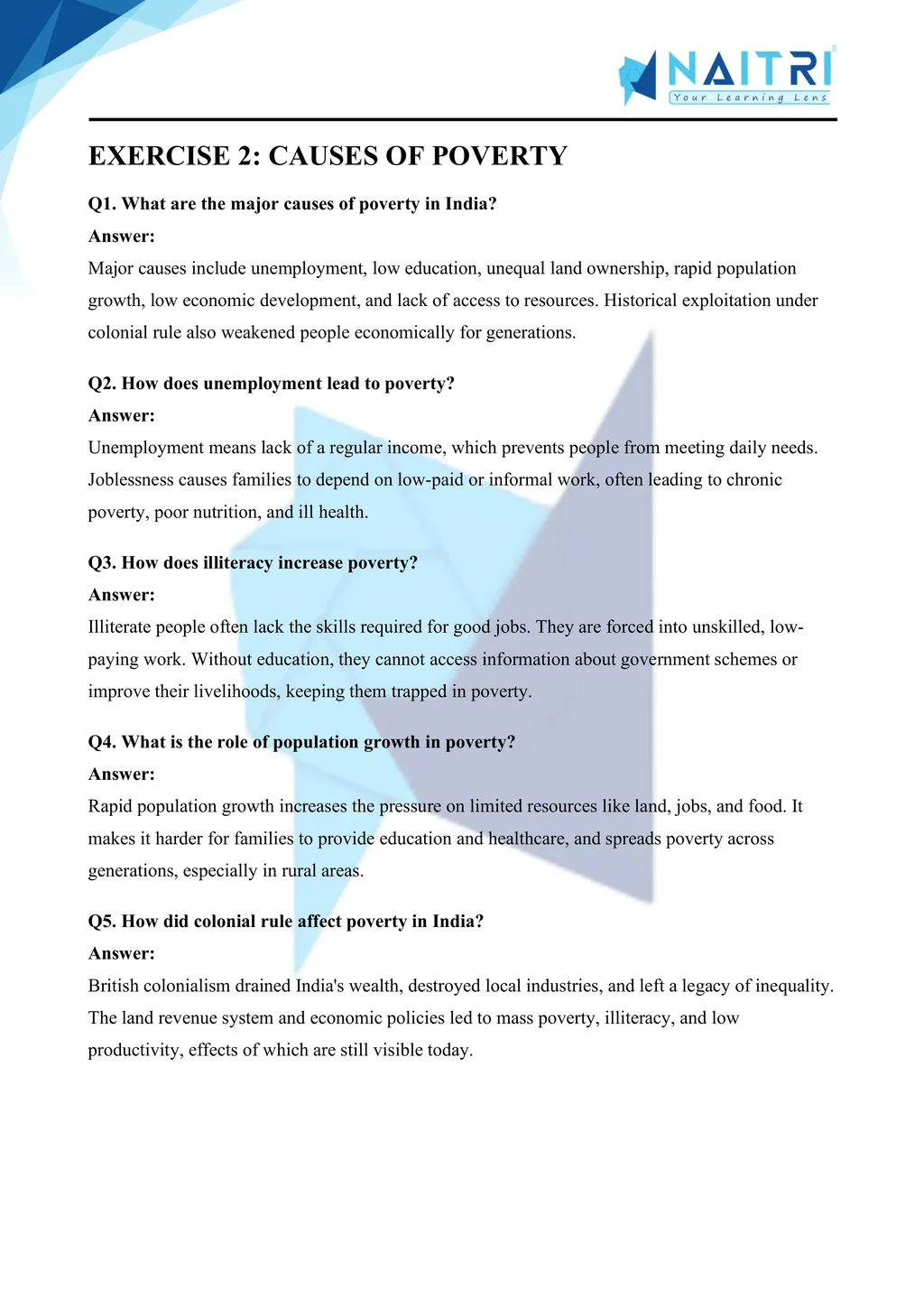
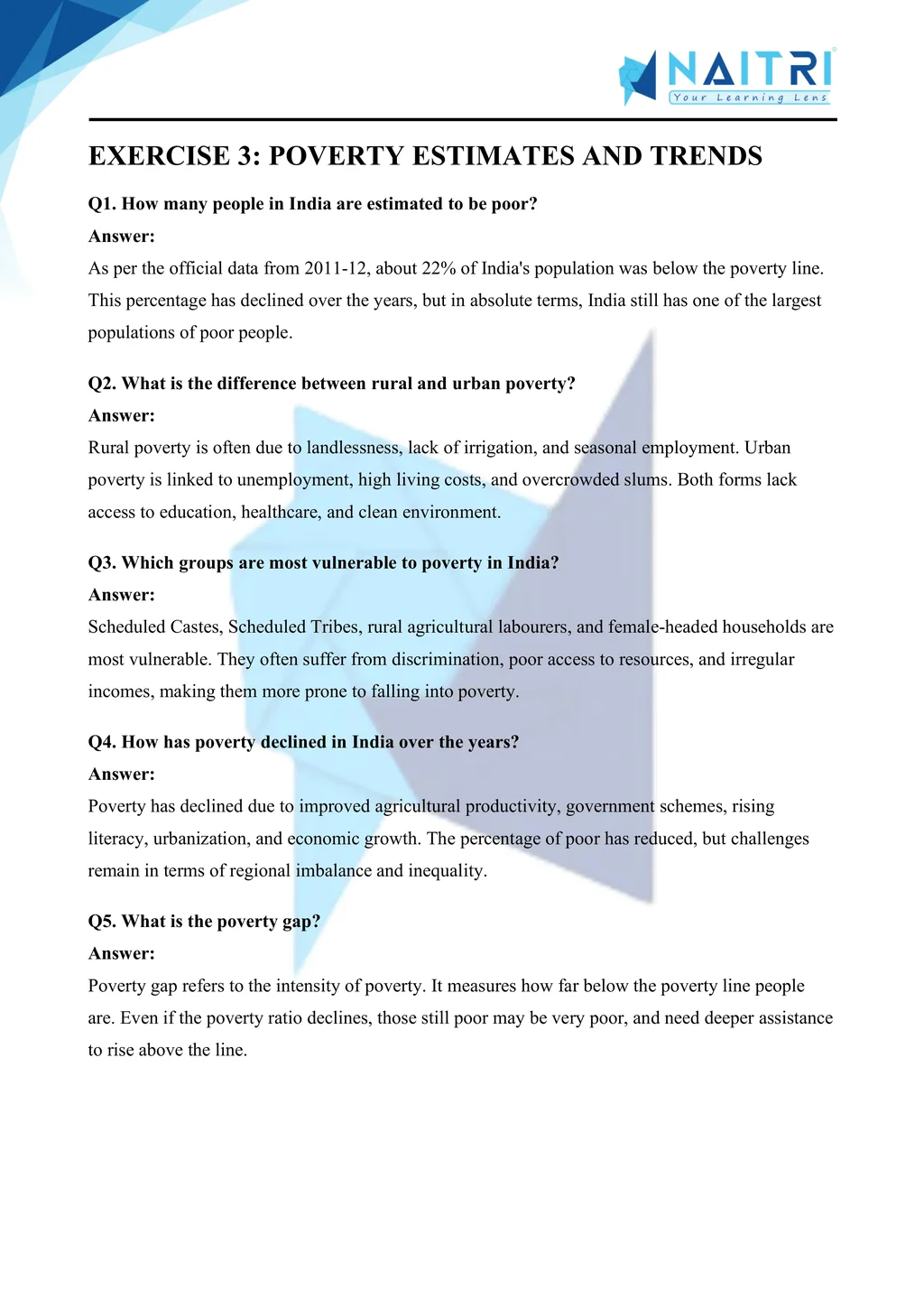
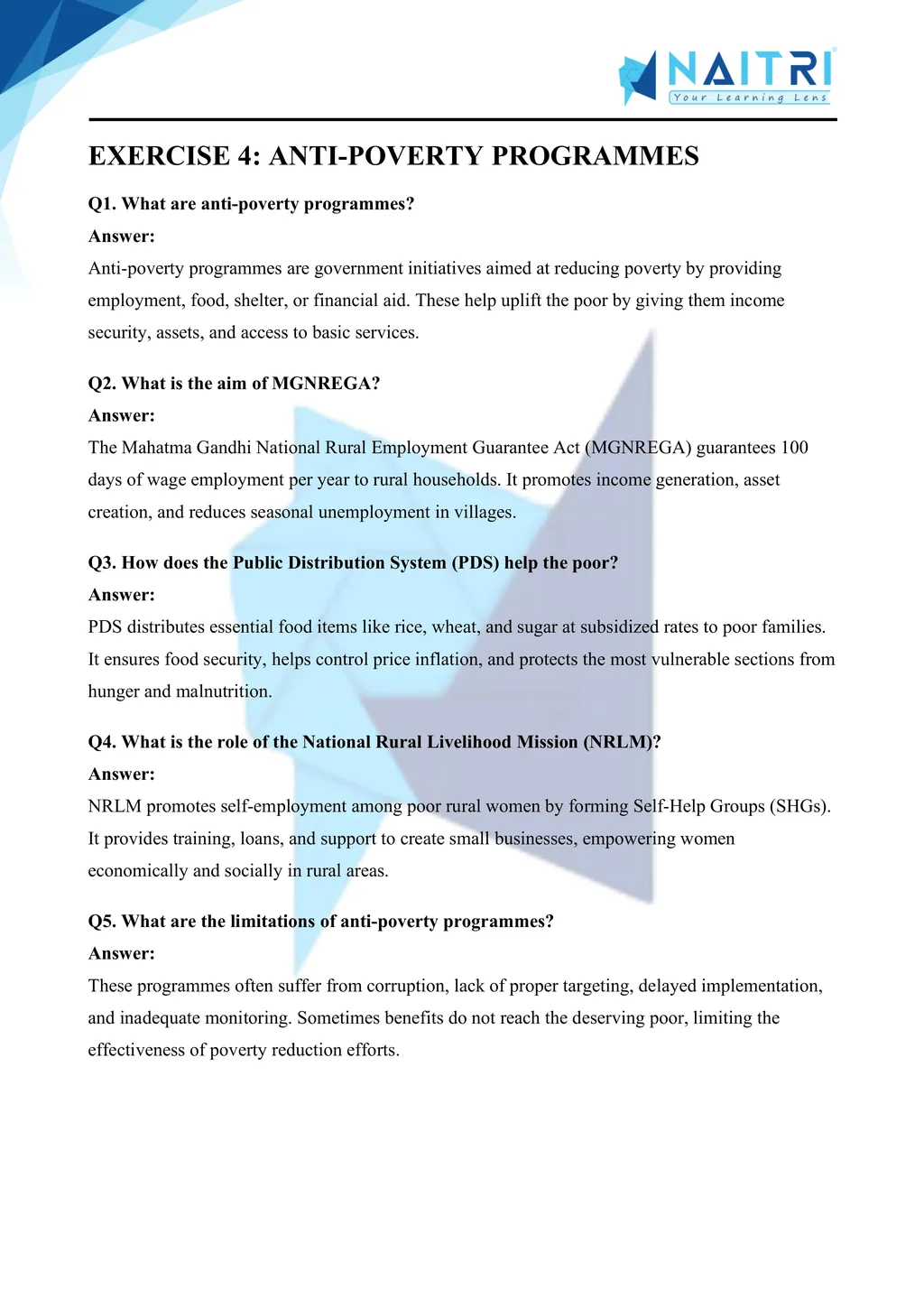
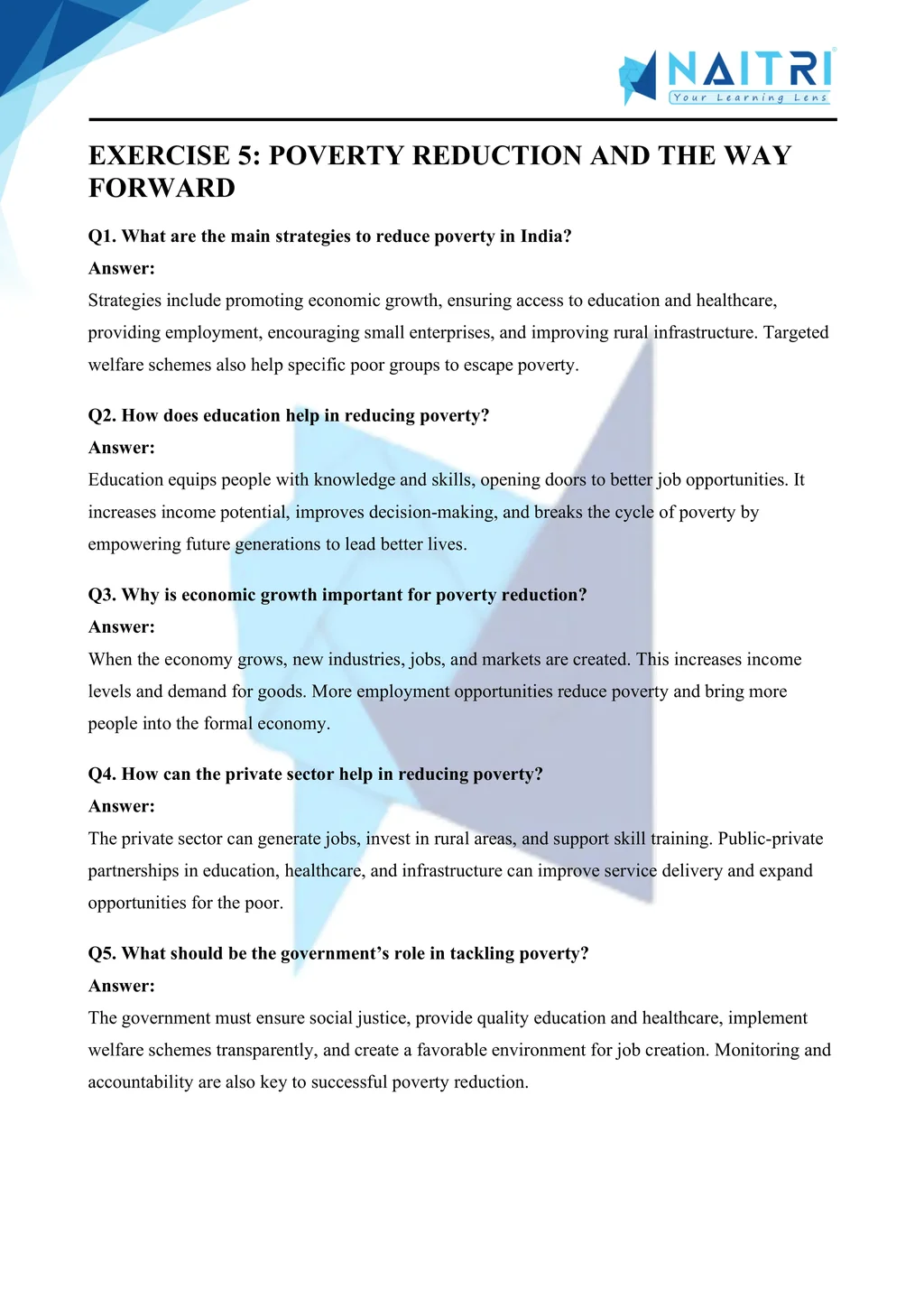
Experience Economics Like Never Before – With AR!
Understanding Poverty as a Challenge is now more exciting and immersive! With the NAITRI App, you can explore complex economics concepts through Augmented Reality (AR). Visualize poverty maps, income gaps, and government schemes in action — right in front of you. Our AR-powered lessons make learning interactive, 3D, and fun, helping you retain concepts better and enjoy every topic.



Visualize . Interact . Understand . The future of learning is here
Poverty as a Challenge – Important Questions with Answers
What is meant by poverty?
Answer: Poverty is a condition where a person lacks basic needs such as food, clothing, shelter, education, and healthcare required for a decent living.What are the indicators of poverty?
Answer: Indicators include low income levels, poor health, lack of education, malnutrition, and unemployment—affecting a person’s quality of life and dignity.What is the poverty line?
Answer: The poverty line is a benchmark income level used to measure poverty, based on minimum calorie intake and basic consumption needs.How is poverty measured in India?
Answer: Poverty is measured using income and calorie intake, with rural and urban thresholds set by government agencies like NITI Aayog and NSSO.What is the current poverty line in rural areas?
Answer: As per recent estimates, a rural person spending less than a certain amount (e.g. ₹816/month) is considered below the poverty line.What are social indicators of poverty?
Answer: These include illiteracy, lack of access to safe drinking water, child malnutrition, high infant mortality, and lack of proper housing.What is meant by vulnerability to poverty?
Answer: It refers to the risk of people becoming poor due to uncertain events like illness, natural disasters, job loss, or social discrimination.Which groups are most vulnerable to poverty in India?
Answer: Scheduled Castes, Scheduled Tribes, landless laborers, and urban casual workers are more prone to remain poor or fall into deeper poverty.How does poverty affect children?
Answer: Children suffer from malnutrition, lack of education, poor health, and are sometimes forced into child labor due to family poverty.Why is poverty considered a challenge?
Answer: Poverty hinders national development by reducing productivity, increasing crime, lowering life expectancy, and causing social unrest and exclusion.What are the main causes of poverty in India?
Answer: Causes include colonial exploitation, unemployment, unequal land distribution, low education, population growth, and social injustice.How did British rule contribute to poverty in India?
Answer: The British drained wealth, destroyed traditional industries, and caused famines, leading to widespread poverty and underdevelopment of the Indian economy.How does unemployment lead to poverty?
Answer: Without jobs, people have no income to meet basic needs, which traps them in a cycle of poverty and dependence.What is the impact of illiteracy on poverty?
Answer: Illiterate individuals lack employment opportunities, are unaware of government schemes, and are often stuck in low-wage, unskilled labor jobs.What steps has the government taken to reduce poverty?
Answer: The government launched wage employment programs, food security schemes, rural development missions, and social welfare plans to improve living conditions.Name two poverty alleviation programs in India.
Answer: Major programs include MGNREGA (guaranteed rural employment) and the Public Distribution System (PDS) for food grains.What is MGNREGA?
Answer: MGNREGA provides 100 days of guaranteed wage employment per year to every rural household to reduce seasonal unemployment and poverty.What is the role of PDS in poverty reduction?
Answer: PDS distributes subsidized food grains to BPL families, ensuring food security and preventing hunger-related poverty.How is poverty linked to health?
Answer: Poor people often live in unhygienic conditions, suffer from malnutrition, and cannot afford treatment, leading to a vicious cycle of illness and poverty.What role does education play in poverty reduction?
Answer: Education helps people get better jobs, improve income, and escape poverty. It empowers them with knowledge and awareness.What is the difference between absolute and relative poverty?
Answer: Absolute poverty refers to lack of basic needs; relative poverty compares one’s economic condition with others in society.How does population growth affect poverty?
Answer: Rapid growth increases demand for resources, causes unemployment, strains public services, and pushes more people below the poverty line.What is meant by the ‘cycle of poverty’?
Answer: It is a continuous condition where poor families remain poor due to lack of resources, education, or opportunities to improve their status.What are the limitations of poverty alleviation programs?
Answer: Issues include corruption, poor implementation, leakages in distribution, and lack of awareness among beneficiaries.Summarise the key challenge of poverty in India.
Answer: Poverty remains a major issue in India due to its complex causes, but with proper planning, education, and reforms, it can be significantly reduced.
Poverty as a Challenge explores the causes, characteristics, and extent of poverty in India. It uses official poverty line data and case studies to describe the multi-dimensional nature of poverty—lack of food, education, shelter, and employment. The chapter also explains anti-poverty programmes and government efforts to reduce poverty. It fosters critical thinking about inequality and the importance of inclusive development.
Related Chapters You May Like
Download Naitri App
Easy, Visual Learning — Right on Your Phone
Learn with Augmented Reality! The Naitri app makes CBSE and MP Board concepts interactive and fun — even in low-resource settings. Watch lessons, complete homework, take tests, and track progress — all in one place. Anytime. Anywhere.
Available on








